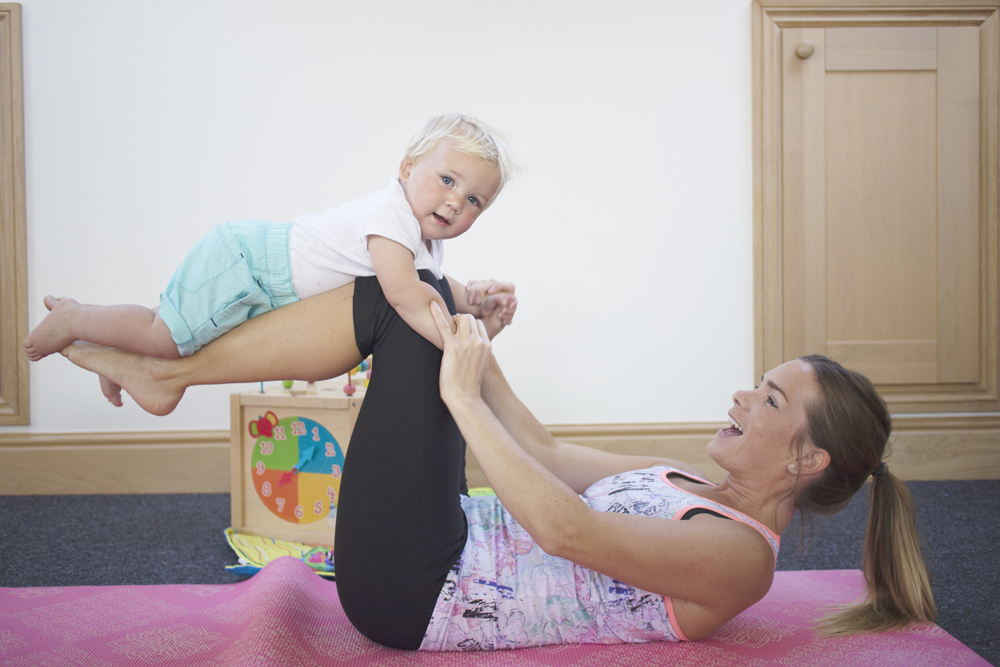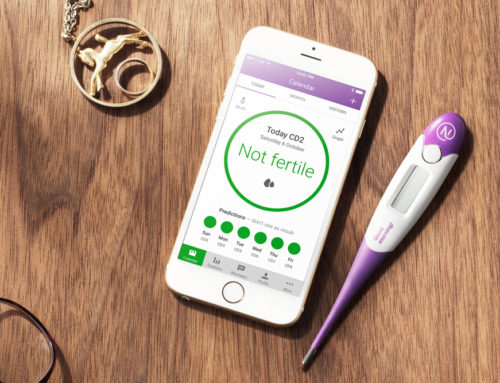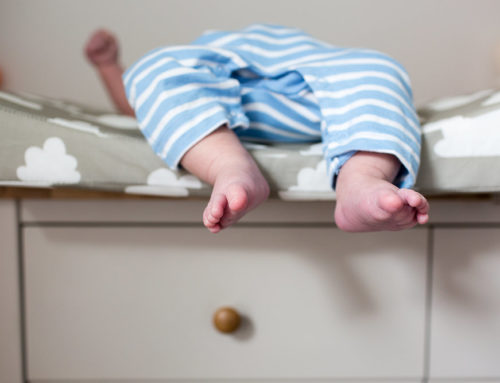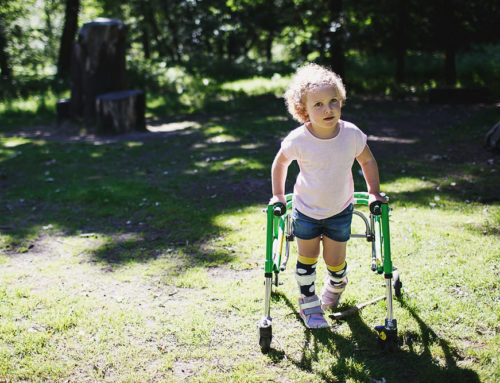Whenever we’ve shared posts about pregnancy or post-natal body issues they’ve always had a great response. It’s reassuring to know that other mums and mums-to-be feel the same as you. So with that in mind, I’ve asked the lovely Laura of Fit Bumps & Mums to do a series of guest posts on women’s health issues. Laura is a Chartered Physiotherapist specialising in Women’s Health, a qualified Pilates instructor AND she’s a Mum to two gorgeous little boys called Harry and Alfie. As an attendee of Laura’s classes both pre and post Elle, I can verify for the fact that she’s awesome too.
Today we’re kicking things off with pelvic floor chat (oh the thrills of motherhood). We’ll also be bringing you posts on looking after yourself down-there following a difficult labour and the not-so-nice issues that we all go through, but often feel too embarrassed to talk about. If there is anything in particular you’d like us to ask Laura, please do leave a comment below the post. Right, I’ll pass you over to Laura…
LAURA FROM Fit Bumps & Mums
Around 1 in 4 of us has experienced bladder or bowel weakness. It affects both men and women, young and old, yet it is rarely discussed! The pelvic floor muscles are located between your legs, they run from your pubic bone at the front to the base of the spine at the back. They act like a sling to hold your pelvic organs in place and give you control when you urinate. As you get older your pelvic floor muscles get weaker. Childbirth can also play havoc with your pelvic muscles and so women who have had children may also have a weaker pelvic floor. Weakened pelvic muscles can lead to urinary incontinence. Stress incontinence is a type of urinary incontinence, where small amounts of urine leak out during an activity. Doing pelvic floor exercises can help to improve stress incontinence by keeping your pelvic muscles strong.
HOW TO DO YOUR PELVIC FLOOR EXERCISES:
If you are unsure about where your pelvic floor is you can feel them if you stop the flow of urine when you go to the toilet, however please don’t do this regularly as it can be harmful to your bladder.
To strengthen the muscles make sure you are sitting comfortably and then squeeze (as if stopping yourself from peeing midstream) and hold for up to 10 seconds, then relax. Make sure you are not tensing anything except your pelvic floor muscles (it’s quite common for people to tighten their buttocks, legs or stomach) also check you are not holding your breath. Repeat this 5-10 times.
Following this you should do 5-10 short and quick holds. Squeeze, relax, squeeze, relax…you get the idea. Repeat this whole routine three times a day (ambitious I know especially if you have children but do your best)! As your muscles strengthen you can try increasing the length of the hold or adding a few extra repetitions – but don’t over do it!
When doing your pelvic floor exercises, always ensure you allow the muscles to fully relax between repetitions. Think about your pelvic floor as an elevator, when you contract you want to take it to the 10th floor, but before you do the next contraction you need to take the elevator all the way back to the ground floor.
Don’t be upset if you do not notice a huge improvement for a few months, as with all muscle strengthening it takes time, and please do not stop doing them even if your symptoms resolve, you need to maintain the strength.
WHY SHOULD I DO THEM?
I am often asked “Should I be doing my pelvic floor exercises when I am pregnant? Won’t it make it more difficult for me to give birth?” The answer it ‘YES you should’ and ‘NO it won’t.’ Providing you are doing them correctly.
If you are pregnant or planning to get pregnant you can start doing your pelvic floor exercises immediately. A strong pelvic floor will lower your risk of experiencing continence problems after having your baby. There are links between a weak pelvic floor and pelvic pain during pregnancy, plus any rumours that a strong pelvic floor will make for a difficult labour are RUBBISH (a study in 2013 of 277 proved that a strong pelvic floor is not disadvantageous to a vaginal delivery).
Ideally, we want pelvic floor muscles that have a functional strength. We want the muscle to be able to contract and relax. It needs to be strong and flexible so it can lengthen when pressure is applied. That is what needs to happen for birth – the baby’s head applies pressure, and the muscles lengthen and open up.
Massive thanks to Laura and please do comment below the post if you have any questions, or if there’s anything in particular you’d like us to cover in this series. You can follow Laura on Instagram or Facebook for pregnancy and post-natal friendly exercises, yummy looking healthy food and cute pics of her adorable boys.














Great post. I’m 8 months post partum and back into my running. Have had no problems with leakage but recently went to a class that had some skipping involved and got a bit of a shock! Just wondering if you would recommend weighted pelvic floor exercise cones I’ve seen you can buy?
Hi Katie, I’ve asked Laura, so will let you know what she says 🙂 x
Hi Katie, thanks for your comment. Firstly although this is not “normal” it is very common. Your pelvic floor is clearly coping with the day to day things, including running, but isn’t so happy with the additional stress of the skipping.
The cones that you can buy CAN be great, however what I would first recommend is that you get things checked out. The only concern is that if you have something like a prolapse (covered in one of the forthcoming topics) that the cones can make this worse rather than better.
Good old fashioned pelvic floor exercises should be enough, but it might be that you need a bit of help making sure you are executing them correctly and get a programme (just as you would if you were going to the gym) set out for you to follow.
Ideally see a Women’s Health Physiotherapist either through the NHS or perhaps privately. Once you have the all clear that everything is where it should be, if you still wish to try the cones then they can definitely help.
(I am not suggesting from what you have said that you do have a prolapse, I just wouldn’t want to advise something without knowing you/more detail and then be recommending something which has the potential to make it worse!!!!)
Great post- I still sometimes have a little leak when I sneeze 14 months later and This is a good reminder I need to keep doing my pelvic floor exercises. It’s good to hear you’re going to be covering the ’embarrassing’ post baby things. Alongside the cuddles and loveliness of it all there’s also tears to heal, body confidence to heal and a sex life to resume amongst it all!
Thank you for your comment, I hope you enjoy the other articles too!
I had a third degree tear so was referred to a physio post partum to check my pelvic floor and recommend strengthening exercises. The trouble is, I kept forgetting to do the exercises! Then a friend recommended the NHS Squeezy app. You can programme in you exercises and how often and then it reminds you when to do them and takes you through them.
It’s great to hear Physiotherapy helped you out! Unfortunately not everyone knows that Physio’s even cover this area and can help! The squeezy app is brilliant and I am so glad you have found something which works for you!
This is great. I am terrible at remembering to do the exercises so it’s great to be reminded. I wish Laura was a bit closer to me, I need to look into something similar in my area as it sounds amazing. Really looking forward to the next installment.
There’s an app I use to remind me called Squeezy – it’s a few quid but totally worth it as otherwise I’d always forget!
Thank you Jules, I’ll definitely check it out – I’m an app person for sure so this sounds like a useful addition.
Thank you for the comment Kat, definitely look into finding a Women’s Health Physiotherapist near you, if you let me know where you are I might be able to help?
I live in west London so you’d think I’d be spoiled for choice. I have done a quick google yesterday and found one physiotherapist specializing in women’s health not too far away but you’ve set the bar pretty high. Maybe we need to move. You come across as genuinely wanting help women and at a time when it’s all about the baby it’s nice to have some focus on the mum as let’s face it most of us aren’t that good at taking care of ourselves.
So pleased RMF is heading down below! I used to find it helpful to do pelvic floors each time something happened- on my old commute I would do ten at each traffic light. Still have occasional weakness, especially sneezing while running! Tired muscles just can’t hold on…
Thank you for the comment. It’s so important that we open up about these topics, so many women are suffering behind closed doors and its not something many people are happy to discuss. There is so much that can be done for pelvic floor weakness and I really hope through these posts we can raise awareness and help a few women out!
It sounds like you may just need to increase the endurance/strength to the next level to be able to cope with the sneezing whilst running, (just as you would increase your programme in a normal gym scenario to achieve your next physical goal). Try holding for a little longer or doing an extra rep in each set to see if you can overcome your remaining issues.
Great post! I am terrible at remembering to do them but really must. I had an awful time straight after birth, I was drinking a load of water for breastfeeding and embarrassingly didn’t make it a few times… I’m hoping I’m not alone there?! And that was when I was going regular exercises! Thankfully that moment has now passed, but I still find I cannot do any form of jumping (running is ok but no high knee running on the spot or jumping jacks, that sort of thing). I do them and everything gets better, but then have a forgetful patch and remember that things are not what they once were, regular practice is a must!! Thank you for the great post, and reminder…
Thanks for the comment Annie, you are definitely not alone, childbirth can play havoc with our bodies (it’s just lucky the babies are all worth it!). I recently had a cough which seemed to last forever and it really set me back, its worth keeping them up if you can but its trying to find what works for you to be able to do them regularly.
I often recommend to my mums to do it while you are brushing your teeth. Its something we all do twice a day and, unless you are running after a toddler trying to get them dressed for the day, you are usually stood still so it can be a prime opportunity to give that pelvic floor a work out!
I’ve literally just been for my first session with a postnatal physio today so I’m glad this is being talked about ? I’m lucky that I haven’t had any leakage issues however following my second baby I have had a prolapse – something I didn’t even know existed and I’m heavily regretting not looking after my pelvic floor muscles more! Completely mortified. I hope the physio will help. Reassuringly she told me it’s extremely common but most women just ignore it so it’s good to be doing something about it…
I am so glad you are getting help! Prolapse is one of the things I am going to cover in the forthcoming posts. I hope you find it helpful!
Great post on such an important topic! As always RMF is so good! Can’t wait to see more articles from Laura!
Thank you Anja!